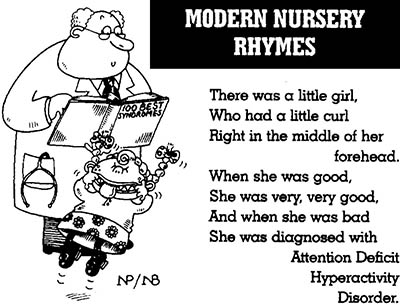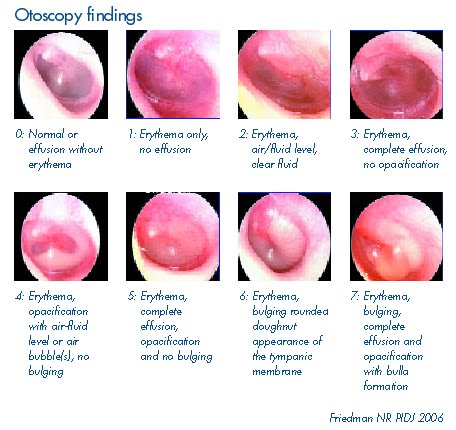BCPS 2013: ADHD Pediatrics (Stimulants: Methylphenidates)
/ The DSM-5 will not be out until later this year (hopefully). So, the criteria for ADHD in the DSM-IV-TR:
The DSM-5 will not be out until later this year (hopefully). So, the criteria for ADHD in the DSM-IV-TR:
DSM-IV Criteria for ADHD
I. Either A or B:
Six or more of the following symptoms of inattention have been present for at least 6 months to a point that is inappropriate for developmental level: Inattention
- Often does not give close attention to details or makes careless mistakes in schoolwork, work, or other activities.
- Often has trouble keeping attention on tasks or play activities.
- Often does not seem to listen when spoken to directly.
- Often does not follow through on instructions and fails to finish schoolwork, chores, or duties in the workplace (not due to oppositional behavior or failure to understand instructions).
- Often has trouble organizing activities.
- Often avoids, dislikes, or doesn't want to do things that take a lot of mental effort for a long period of time (such as schoolwork or homework).
- Often loses things needed for tasks and activities (e.g. toys, school assignments, pencils, books, or tools).
- Is often easily distracted.
- Is often forgetful in daily activities.
Six or more of the following symptoms of hyperactivity-impulsivity have been present for at least 6 months to an extent that is disruptive and inappropriate for developmental level: Hyperactivity
- Often fidgets with hands or feet or squirms in seat when sitting still is expected
- Impulsivity
- Often blurts out answers before questions have been finished.
- Often has trouble waiting one's turn.
- Often interrupts or intrudes on others (e.g., butts into conversations or games)
- Often gets up from seat when remaining in seat is expected
- Often excessively runs about or climbs when and where it is not appropriate (adolescents/adults feel restless)
- Often has trouble playing or doing leisure activities quietly
- Is often on the go or often acts as if driven by a motor
- Often talks excessively
II. Some symptoms that cause impairment were present before age 7 years.
III. Some impairment from the symptoms is present in two or more settings (e.g. at school/work and at home).
IV. There must be clear evidence of clinically significant impairment in social, school, or work functioning.
V. The symptoms do not happen only during the course of a Pervasive Developmental Disorder, Schizophrenia, or other Psychotic Disorder. The symptoms are not better accounted for by another mental disorder (e.g. Mood Disorder, Anxiety Disorder, Dissociative Disorder, or a Personality Disorder).
Based on these criteria, three types of ADHD are identified:
IA. ADHD, Combined Type: if both criteria IA and IB are met for the past 6 months
IB. ADHD, Predominantly Inattentive Type: if criterion IA is met but criterion IB is not met for the past six months
IC. ADHD, Predominantly Hyperactive-Impulsive Type: if Criterion IB is met but Criterion IA is not met for the past six months.
American Psychiatric Association: Diagnostic and Statistical Manual of Mental Disorders, Fourth Edition, Text Revision. Washington, DC, American Psychiatric Association, 2000.
In late October 2011, the American Academy of Pediatrics (AAP) released new guidelines for the diagnosis and treatment of ADHD, updating guidelines that dated back to 2000 and 2001. The biggest change is that the guidelines were expanded to include recommendations for children and adolescents ages 4 to 18. The previous guidelines included children ages 6 to 12.
There are two recommended forms of treatment for ADHD, medication and behavior therapy. The new guidelines recommend starting with a course of behavior therapy in preschool age children (ages 4-5) and adding medication if necessary. For older children, they recommend a combination of medication and behavior therapy.
Treatment Options: Combination of pharmacotherapy and behavioral therapy is more beneficial compared
with either intervention alone.
Stimulant medications: Some children with ADHD respond better to one stimulant type than another; therefore, both methylphenidate- and amphetamine-containing products should be tried before stimulant treatment is deemed a failure.
a. Methylphenidate-containing products: “Ramp effect” = behavioral effects are proportional to the
rate of methylphenidate absorption into the central nervous system
Treatment
**Combination therapy with behavioral therapy and medication is better than either alone.
Stimulant Medications (amphetamine or methylphenidate try both before deeming stimulants a failure)
Adverse Effects of this category: (a) Headache, stomachache, loss of appetite, and insomnia (b) Use with caution in patients with glaucoma, tics, psychosis, and concomitant monoamine oxidase inhibitors (c) Insomnia
Methylphenidate immediate release (Ritalin)
- A 50:50 racemic mixture of l-threo and d-threo isomers of methylphenidate
- The short duration of action requires two or three doses daily.
Dexmethylphenidate (Focalin)
- Only d-threo isomer, thought to be the active enantiomer of methylphenidate
- l-Threo isomer hasn't been shown to hinder the effectiveness or increase the adverse effects of methylphenidate
- Recommended doses are half those of racemic methylphenidate immediate release
- Short duration of effect requires two or three doses daily
- Offers no proven pharmacoeconomic benefit over other methylphenidate immediate release products (i.e., Ritalin and generics)
Methylphenidate sustained/extended release (Metadate ER, Ritalin SR)
- Duration of action may be up to 8 hours, but must use two doses daily for afternoon control
- May be used in place of methylphenidate immediate-release BID dosing regimen after dose titration with IR product
Methylphenidate (OROS) (Concerta)
- Indicated for the treatment of ADHD in children 6 years and older
- Tablet contains osmotic agents and a rate-controlling membrane with a laser-drilled hole for release
- Outer capsule contains 22% of drug (immediate release) and tablet core contains the remainder released over 10 hours
- Do not crush or divide
- Duration of effects is 10-12 hours (behavioral)
- Once daily dose with/without food
Dexmethylphenidate ER (Focalin XR)
- Uses spheroidal oral drug absorption system polymer-coated beads
- Bimodal drug release
- Faster onset than methylphenidate (OROS), but shorter duration of action. Afternoon symptom control isn't as good as with methylphenidate (OROS) Concerta.
Methylphenidate modified release (Metadate CD)
- Treatment for children 6 and older
- Capsule contains 30% immediate-release beads and 70% extended-release beads (slowly released about 4 hours after ingestion)
- Duration of behavioral effects is 6–8 hours probably need afternoon coverate
- Once-daily dosing; capsule may be opened and sprinkled on applesauce
Methylphenidate extended release (Ritalin LA)
- Indicated for the treatment of ADHD in children 6 years and older
- Uses spheroidal oral drug absorption system polymer-coated beads
- Contains 50/50 immediate/extended release to mimic BID methylphenidate immediate release
- Efficacy can wane later in the day requiring methylphenidate IR coverage for late-day symptoms
- Once daily dosing can sprinkle on applesauce
Methylphenidate transdermal system (Daytrana)
- Apply to hip 2 hours before effect is needed; recommended to remove 9 hours after but can wear up to 16 hrs
- Duration of effect is about 3 hours after removing the patch
- Dose may be titrated weekly to desired effect
- Can swim or exercise while wearing
Amphetamine containing continued tomorrow...




